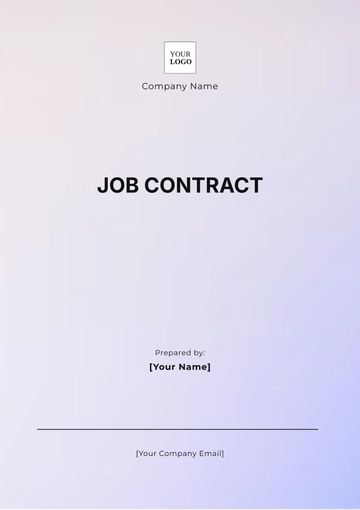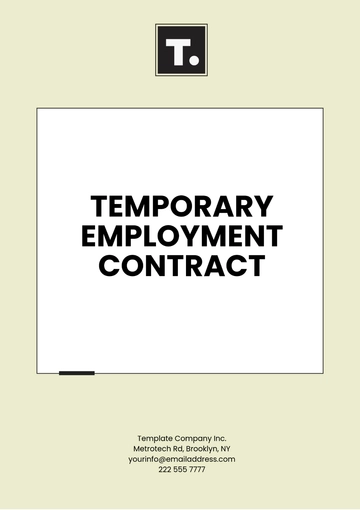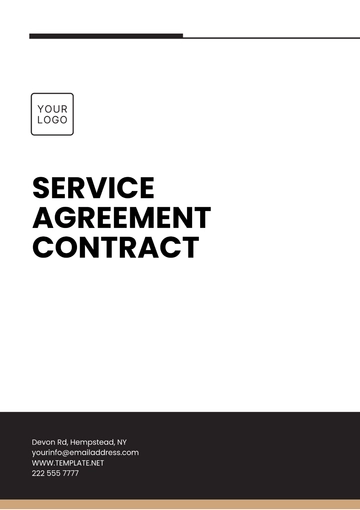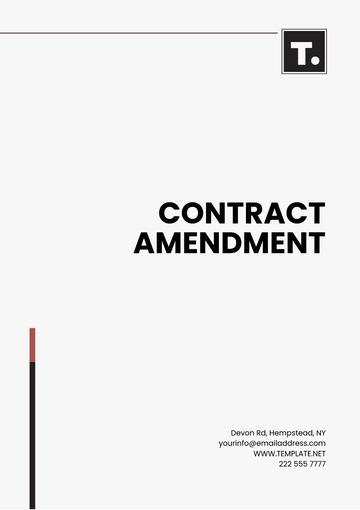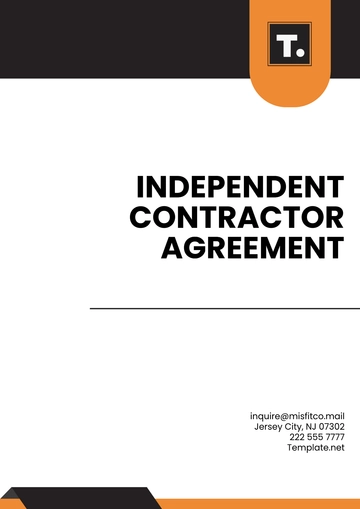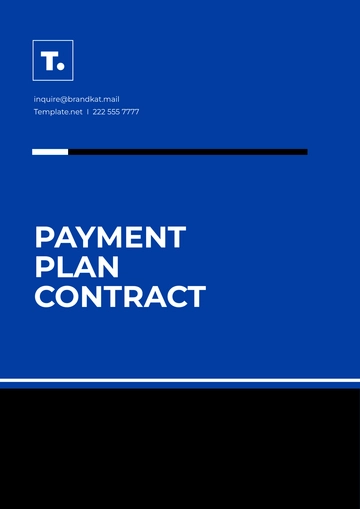Free Sales Guide to Understanding Contracts
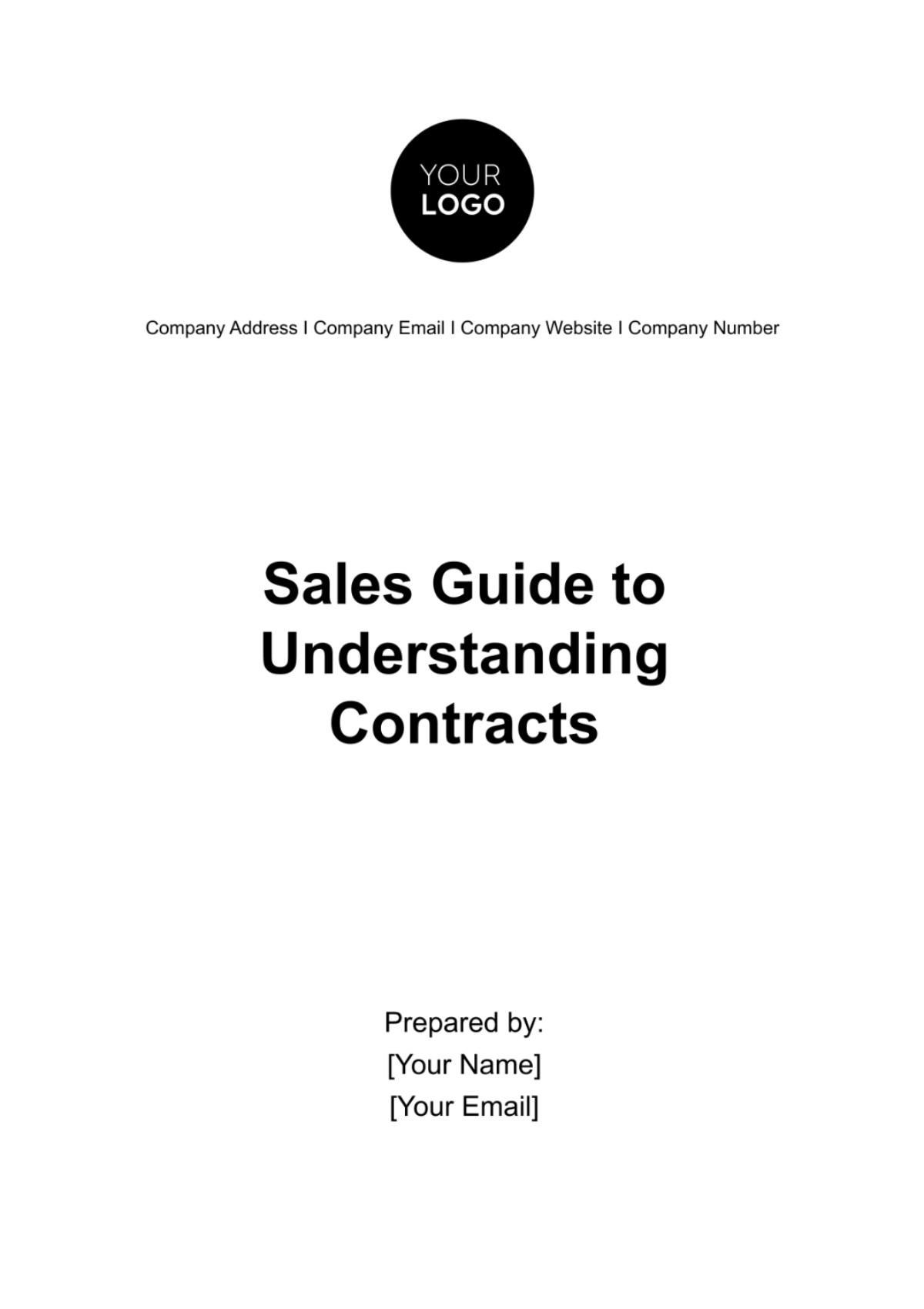
I. INTRODUCTION
Welcome to the this guide! Contracts are the foundation of business relationships. Whether you are a seasoned professional or a newcomer in the world of commerce, grasping the nuances of contracts is essential for your success. In this guide, we will not only introduce you to the fundamental concepts of contracts but also provide actionable insights that can be applied to any business scenario.
A. Why Contracts Matter
Contracts are more than just legal documents; they are the lifeblood of commerce. They are the threads that weave trust, accountability, and reliability into the fabric of business transactions. Without contracts, the business world would be chaotic, with uncertainties, disputes, and potential legal issues lurking around every corner. Contracts offer a structured and orderly framework for business dealings, enabling all parties involved to operate with confidence.
B. The Versatility of Contracts
Contracts are not limited to a specific industry or type of business. Whether you are a manufacturer selling goods, a service provider, a freelancer, or a small business owner, understanding contracts is crucial. It applies to a wide range of business activities, such as sales, services, employment, real estate, and partnerships. Regardless of your niche, contracts will be a part of your journey, and knowing how to navigate them will greatly benefit your endeavors.
II. IMPORTANCE OF CONTRACTS
Contracts serve as the legal guardians of your business interests. They create a binding agreement between parties and provide a structured framework for conducting business. Here are some compelling reasons why contracts are of utmost importance:
IMPORTANCE | DESCRIPTION |
|---|---|
Legal Protection | Contracts offer a layer of legal protection for all parties involved. They outline rights and responsibilities and establish a clear record of what was agreed upon. |
Clarity and Expectations | A well-drafted contract leaves no room for ambiguity. It defines the scope of work, roles, responsibilities, and expectations, ensuring everyone is on the same page. |
Enforceability | In the unfortunate event of a dispute, a contract serves as a legally enforceable document that can be relied upon to resolve issues. |
Professionalism | Utilizing contracts demonstrates professionalism and commitment to your business partners. It sets a high standard for the way you conduct your business affairs. |
Dispute Resolution | Contracts include provisions for resolving conflicts, reducing the risk of lengthy, costly legal battles. |
Risk Mitigation | By addressing potential risks and liabilities upfront, contracts help you minimize uncertainties and protect your interests. |
Trust Building | Business relationships are built on trust. Contracts foster trust by clarifying obligations, ensuring fairness, and demonstrating commitment to fulfilling promises. |
III. KEY ELEMENTS OF A CONTRACT
Contracts are the foundation of business agreements, ensuring that all parties involved understand their obligations and rights. To create an effective contract, it's crucial to comprehend the key elements that make up this legally binding document:
A. Parties
Identifying the Involved Parties: The "Parties" section of a contract identifies the individuals or entities that are entering into the agreement. This is where you'll specify:
Your Company Name: This is where you put your company's legal name, address, and contact information.
The Client or Counterparty: Include the legal name, address, and contact details of the other party. It's vital to ensure that you are dealing with the correct entity or person.
B. Offer and Acceptance
Clear Offer and Acceptance: The core of any contract lies in the offer and acceptance, often referred to as the "meeting of the minds." This part of the contract outlines:
Offer: What your company is proposing or offering. This could be a product, service, or a combination of both.
Acceptance: How the client agrees to your offer. This can be through a signature, verbal agreement, or another accepted method.
C. Consideration
Defining Consideration: Consideration is what each party in the contract will receive in exchange for their obligations. It signifies that there's a valuable exchange happening. Consideration can be:
Payment: The most common form of consideration is monetary compensation.
Goods or Services: Sometimes, it can be the delivery of goods or the performance of services.
Promises: In some cases, it could be a promise to do or not do something in the future.
D. Legal Purpose
Ensuring Legal Compliance: Contracts must serve a legal and legitimate purpose. This means that the agreement should not involve activities that are illegal or against public policy. It's important to:
Avoid Illegal Activities: Ensure the contract doesn't involve any illegal activities or actions that go against established laws.
Compliance with Regulations: Be aware of industry-specific regulations and legal standards that apply to your contract.
E. Mutual Consent
Demonstrating Willing Agreement: To create a valid contract, both parties must willingly agree to its terms and conditions. This element emphasizes:
Voluntary Agreement: The contract should not be the result of coercion, fraud, or undue influence.
Competency: All parties should have the legal capacity to enter into the contract. This means they are of legal age and are mentally competent.
F. Terms and Conditions
Defining the Agreement: This is where you specify the detailed terms and conditions of the contract. It's the most substantial part of the document and covers:
Scope of Work: Clearly outline what your company will provide, including product specifications, services, or project details.
Timeline: Specify the timeframe for performance or delivery.
Payment Terms: Detail the payment schedule, method, and any associated penalties or discounts.
Performance Standards: Define quality standards, benchmarks, or any specific criteria that must be met.
Termination Clause: Include conditions under which the contract can be terminated, and the process for doing so.
Confidentiality and Non-Disclosure: If necessary, add provisions that protect sensitive information.
IV. TYPES OF CONTRACTS
Contracts are incredibly versatile and can take many forms to suit the specific needs of businesses. Here's an in-depth look at some common types of contracts:
A. Sales Contracts
A sales contract, often referred to as a purchase agreement or sales agreement, is a legally binding document that outlines the terms and conditions of a transaction between a buyer and a seller. It typically covers the sale of goods or services and is widely used in retail, wholesale, e-commerce, and various industries.
B. Service Contracts
Service contracts are agreements that define the scope and terms of services to be provided. They are commonly used by service providers, freelancers, consultants, and businesses that offer services to clients. These contracts ensure that both parties have a clear understanding of the services to be rendered.
C. Employment Contracts
Employment contracts are used to formalize the relationship between employers and employees. They outline the terms and conditions of employment, which can include salary, benefits, job responsibilities, and termination procedures.
D. Lease Contracts
Lease contracts, commonly used in real estate, allow individuals or businesses to rent or lease property, equipment, or assets. These contracts specify the terms of the lease, including rental payments, duration, and any special conditions.
E. Partnership Agreements
Partnership agreements are essential for businesses where two or more parties collaborate on a venture. These agreements help define each partner's roles, responsibilities, and the distribution of profits and losses.
V. DRAFTING A CONTRACT
Creating a comprehensive and well-structured contract is a fundamental step in the business process. It sets the foundation for a successful business relationship and helps prevent misunderstandings or disputes down the line. Here are detailed steps for drafting a contract:
A. Define the Parties
The first step is to clearly identify the contracting parties. Use their full legal names, addresses, and contact information. Ensure accuracy to avoid any ambiguity in the future. You may also specify the roles and responsibilities of each party.
B. Purpose and Scope
In this section, describe the purpose of the contract and its scope. This is where you outline the main objectives, goals, or deliverables that the contract aims to achieve. Be specific and concise to leave no room for interpretation.
C. Terms and Conditions
One of the most critical sections of a contract, this part details the specifics of the agreement. It includes elements such as:
Deliverables: Enumerate what will be delivered, e.g., goods, services, reports, or products.
Timeline: Set clear deadlines for deliverables, milestones, and project completion.
Payment Terms: Clearly state the payment structure, including amounts, due dates, and methods.
Quality Standards: Define quality expectations and any criteria that need to be met.
D. Legal Compliance
It's essential to ensure that your contract complies with the relevant laws and regulations. This section should address any legal requirements or industry-specific regulations that might apply. For example, if you're selling products, include compliance with consumer protection laws.
E. Dispute Resolution
Include a clause outlining the process for resolving conflicts or disputes. Specify whether disputes will be resolved through negotiation, mediation, arbitration, or in a court of law. This section can save you time and money in case disagreements arise.
F. Review and Revise
Once the initial draft is complete, it's crucial to review it meticulously. Legal expertise is often advisable to ensure compliance with all applicable laws and to eliminate any ambiguities. Review the contract for completeness and accuracy, making sure that all terms are fair and reasonable. Invite the other party to review the contract as well and be open to their feedback.
VI. REVIEW AND NEGOTIATION
After drafting the initial contract, the review and negotiation phase is crucial to ensure that both parties are comfortable with the terms and conditions. Here are detailed steps for this critical phase:
A. Contract Review
The first step is to conduct a thorough review of the contract. Ensure that it aligns with your business needs, goals, and expectations. Pay close attention to the following:
Clarity: Check if the language is clear and easily understandable.
Consistency: Verify that the terms used are consistent throughout the contract.
Compliance: Ensure that the contract complies with all relevant laws and regulations.
Rights and Obligations: Confirm that the contract clearly outlines the rights and obligations of each party.
Risks and Liabilities: Assess potential risks and liabilities and how they are allocated in the contract.
B. Negotiation
Negotiation is a process of discussion and compromise to resolve any discrepancies or concerns. Be open to negotiating and be prepared to make changes if necessary. Some key negotiation strategies include:
Prioritize Key Points: Identify your non-negotiable terms and be flexible on less critical issues.
Maintain a Professional Tone: Keep the negotiation professional and respectful to build trust.
Document Changes: Clearly document any changes or amendments made during negotiations.
Engage Legal Counsel: If necessary, consult legal experts to guide you through the negotiation process.
C. Amendments
Based on the negotiation process, amendments may be needed to address concerns or to clarify terms. These changes should be made in a way that both parties agree upon and feel comfortable with.
D. Mutual Agreement
Both parties must reach mutual agreement on all terms and conditions. This ensures that the contract reflects the shared understanding of the business arrangement and minimizes the chances of disputes in the future.
E. Finalize
Once all parties are satisfied with the contract's terms, it's time to finalize the document. Ensure that all changes and amendments are accurately reflected in the final version.
VII. CONTRACT EXECUTION
Contract execution is the final step in solidifying the agreement. This is where the contract becomes a legally binding document. Here's how to proceed:
A. Signing
All involved parties should sign the contract. Make sure the signatures are clear and legible.
In some cases, electronic signatures may be acceptable, but it's important to verify the legal validity in your jurisdiction.
B. Witnesses
Depending on the contract type and local regulations, you may require witnesses to the signing of the contract.
Witnesses should be impartial, and their role is to verify the authenticity of the signatures.
C. Notarization
Some contracts, especially real estate or complex financial agreements, may require notarization for added legal validity.
A notary public can verify the identity of the signing parties and witness their signatures.
D. Effective Date
Clearly specify when the contract becomes effective. This is the date from which the terms and obligations within the contract are in force.
E. Distribution
Ensure that all parties receive a copy of the signed contract for their records.
It's advisable to keep both digital and hard copies of the executed contract.
VIII. POST-CONTRACT MANAGEMENT
Effective post-contract management ensures that the agreed-upon terms are upheld, helping to mitigate risks and maintain a positive business relationship. Here's how to excel in this critical phase:
A. Record Keeping:
Maintain meticulous records of all contractual documents. This includes the original signed contract, any amendments, correspondence related to the contract, and a history of performance and payments. Having a comprehensive record not only provides transparency but also serves as invaluable evidence in case of disputes or audits.
B. Compliance:
It's essential that all parties involved adhere to the terms and conditions outlined in the contract. This may involve regular check-ins and assessments to ensure both parties are fulfilling their obligations. If there are any deviations from the agreed terms, address them promptly to avoid potential conflicts.
C. Renewal:
Contracts often have expiration dates. It's crucial to be aware of these dates and proactively plan for contract renewals or extensions. Failing to renew a contract can lead to disruptions in business operations. On the other hand, early renewal discussions can help adapt the contract to evolving business needs.
D. Dispute Resolution:
While the goal is to maintain a harmonious business relationship, conflicts may still arise. In the event of a dispute, the contract should include a clearly defined dispute resolution process. This process might involve negotiation, mediation, or arbitration. Familiarize yourself with the steps outlined in the contract and follow them meticulously to resolve conflicts efficiently.
E. Auditing and Performance Evaluation:
Periodic audits and performance evaluations are essential to ensure that the terms of the contract are being met. Regularly assess key performance indicators and deliverables to ensure the contract remains beneficial to all parties involved.
F. Communication:
Open and transparent communication is key to successful post-contract management. Maintain an ongoing dialogue with the other party, addressing concerns, discussing progress, and ensuring that both parties are satisfied with the contract's execution.
IX. COMMON CONTRACT PITFALLS
While contracts are essential for business operations, they can be fraught with pitfalls if not approached carefully. Here are some common contract pitfalls to be aware of and how to avoid them:
PITFALL | DESCRIPTION |
|---|---|
Incomplete Contracts | Any vague or incomplete clauses can lead to misunderstandings and disputes. |
Unclear Language | The use of overly technical or convoluted language can create confusion. Contracts should be drafted in clear and concise language that is easily understood by all parties involved. |
Failure to Review | Rushing through the contract creation and execution process is a recipe for trouble. Always take the time to thoroughly review the contract, and involve legal experts when necessary. |
Lack of Legal Counsel | Contract law can be complex, and contracts often have significant legal implications. Engaging legal counsel or a contract attorney can provide valuable insights and guidance, helping you avoid costly legal mistakes and ensuring that your contract is legally sound. |
No Dispute Resolution Clause | Not including a dispute resolution clause is a significant oversight. Disputes are not uncommon in business, and having a clear, predefined process for resolving conflicts can save both time and money. |
X. CONCLUSION
In conclusion, understanding contracts is fundamental for the success of any business. Contracts provide a framework for conducting business, offer legal protection, and foster trust between parties. By mastering the art of contract management, you can establish strong and trustworthy business relationships while mitigating risks.
Remember that this guide is a general overview, and specific contracts may require customization to suit your unique business needs. If you have any questions or need personalized guidance, please do not hesitate to contact [Your Company Name] at [Your Company Phone] or [Your Company Email]. We are here to assist you in navigating the complex world of contracts and ensuring the prosperity of your business.
- 100% Customizable, free editor
- Access 1 Million+ Templates, photo’s & graphics
- Download or share as a template
- Click and replace photos, graphics, text, backgrounds
- Resize, crop, AI write & more
- Access advanced editor
Improve your business's contract education with Template.net’s Sales Guide to Understanding Contracts template. This comprehensive guide equips you with a clear, adaptable framework for navigating contracts in various industries. From the importance of contracts to their execution and post-management, it's your key to confident and professional contract handling. Get started with our product now!
You may also like
- Rental Contract
- Contractor Contract
- Contract Agreement
- One Page Contract
- School Contract
- Social Media Contract
- Service Contract
- Business Contract
- Restaurant Contract
- Marketing Contract
- Real Estate Contract
- IT Contract
- Cleaning Contract
- Property Contract
- Supplier Contract
- Partnership Contract
- Food Business Contract
- Construction Contract
- Employment Contract
- Investment Contract
- Project Contract
- Payment Contract
- Student Contract
- Travel Agency Contract
- Startup Contract
- Annual Maintenance Contract
- Employee Contract
- Gym Contract
- Event Planning Contract
- Personal Contract
- Nursing Home Contract
- Law Firm Contract
- Work from Home Contract
- Software Development Contract
- Maintenance Contract
- Music Contract
- Amendment Contract
- Band Contract
- DJ Contract
- University Contract
- Salon Contract
- Renovation Contract
- Photography Contract
- Lawn Care Contract





